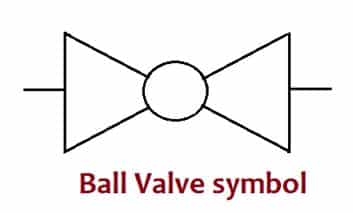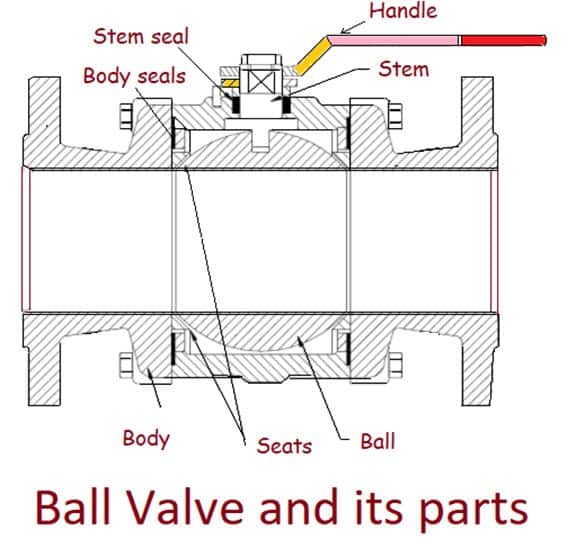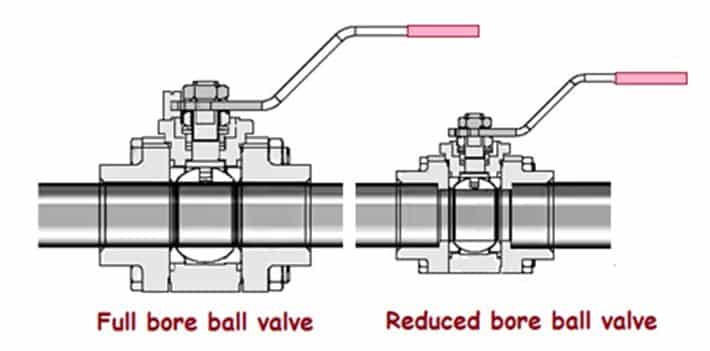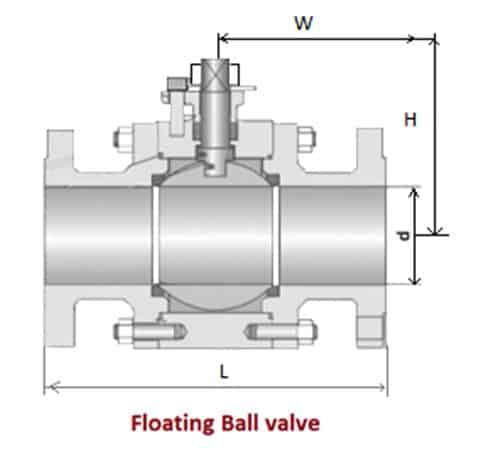A ball valve consists of the valve body with a rotating ball to control flow. A ball valve as a throttling control device ideally uses a full bore or reduced bore mechanism.
The ball valve only needs to operate with a 90-degree rotation and a small torque to close tight.

Structure of Ball Valve
The ball valve has 7 crucial parts.

1. Body and cover:
Pressure retaining parts is the container of the internal parts of the Valves.
2. Ball:
Element positioned in the flow path that allows or prevents flow within the line, through a 90º turn on an axis perpendicular to the direction of flow.
3. Stem:
The element that drives the ball.
4. Handle:
Handle Lever that connects the ball that operates through the stem
5. Seats:
Components of different materials are placed to hold the ball between the sealing surfaces of the same seat, thus allowing fluid-tight closure.
6. Body Seals:
Body seals prevent leakage between the body and the valve cover. They can be made of soft and hard seals.
7. Stem Packing or Seal:
Sealing elements are placed between the valve body and the stem to prevent outward leakage. They can be made of PTFE materials.
Ball bore design in Ball Valve:
It is of two types.

1. Full bore:
The port of the full bore ball valve is equal to the diameter of the pipe and presents little or no restriction to flow.
2. Reduced bore:
the port of a reduced bore ball valve is smaller than the pipe to absorb a small amount of pressure drop.
The ball valve has a simple construction and its operating performance is good.. Small driving torque, simple operation, easy to perform quick opening and closing, and easy operation within a certain range of nominal pitch and maintenance.
Types of ball valves:
There are many variations of ball valves and new types of ball valves are still emerging. We can categorize the valves into several types.
Based on the ball support method
There are primarily two ways to hold up the ball in the valve body.
- Floating ball valve.
- Trunnion ball valve.
Floating ball valve:
In the floating ball design, two-seat rings support the ball. There is a slot in the top of the ball that is perpendicular to the hole. The shaft is machined to fit into the slot. This arrangement enables the shaft to turn the ball to move (float) in the direction of the slot.
Its main characteristic is that the sphere/ball does not have a support axis/trunnion. The seats at both ends of the valve inlet and outlet support the ball. The valve stem and ball are connected movably, as shown in Figure.

The ball moves in within two valve seats and is in a “floating state”. We can operate the ball by manual hand lever or by any type of actuator. The ball can rotate on either side of the seat.
When the flow traverse of the ball aligns with the traverse of the valve, the ball valve is in an open state. Flow is smooth and valve resistance to flow is minimal. When the sphere/ball is at 90 ° position, the flow path of the sphere/ball is perpendicular to the valve passage.
Ball valves have a simple structure, easy manufacturing, low cost, and reliability.
The sealing performance of the floating ball valve is related to the pressure of the fluid. Under the same conditions, the higher the pressure, the easier it is to seal.
Floating ball valves are generally suitable for valves smaller than 8”.
Trunnion Mounted Ball Valve
The ball connects with the upper stem and lower trunnion. Thus, it becomes an integral coupling type ball, where the ball is forged (welded) with the upper trunnion, and the lower trunnion integrates into the bearing/trunnion plate.
Therefore, the ball moves freely perpendicular to the valve body, but not along the axis of the channel. The force generated by the fluid pressure transmits to the trunnion, while the trunnion-mounted ball valve is in operation.
The torque required by the trunnion body valve is less compared to the floating ball design.
The ball does not push into the valve seat. Therefore, the valve seat does not get excessive pressure. Trunnion mounted ball valve has low torque, little deformation of the valve seat.
It has a long service life, is suitable for high pressure, larger valve diameter, stable sealing performance.

Welded:
Welded ball valves guarantee the absence of leaks during the life of the valve, and do not require operational maintenance. This is a very important factor, especially for ball valves installed in underground or subsea pipelines. This design is most suitable for hazardous fluids.
Top entry:
It is easy to remove the ball by removing the top cover. It is possible to repair the valve on-site.
Side entry:
One-piece body. The ball is mounted from an axial entry.
Split body:
The body is made up of two or three pieces. Allows inspection and maintenance of all internal parts.
Materials of Ball Valve:
Body:
Cast iron, ductile iron, bronze, brass, aluminum, carbon steels, steels
stainless, titanium, tantalum, zirconium; polypropylene, and PVC plastics.
Seat material:
Soft wears made of TFE, PFA, Nylon, Buna-N, Neoprene, etc.
Metal seats:
metal seats are made of stainless steel, tungsten carbide, etc.
Uses of Ball Valve:
Floating ball valves are suitable for low and medium pressure conditions, whereas trunnion is for high-pressure applications.
The ball valve is suitable for general working media like water, acids, natural gas, solvents but also for media with severe working conditions like hydrogen peroxide, methane, oxygen, and ethylene.
Advantages of the ball valve
1) Low resistance to flow, the full port ball valve has almost zero resistance to flow
2) simple design.
3) Reliable airtight seal.
4) User-friendly operation, quick open/close, fully open to fully closed with just a 90 ° turn. Suitable as a remote valve.
5) Easy maintenance, simple configuration with a dynamic seal that is easy to replace.
6) When it is fully open or fully closed, the sealing surface of the seat and the ball does not come into contact with the medium when the medium flow. Therefore, the sealing surface will not be easily polluted or eroded.
7) The open closure of the ball valve has a cleaning effect, so it is suitable for media with floating particles.
Read Next: